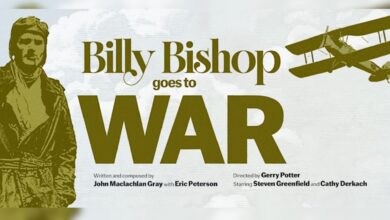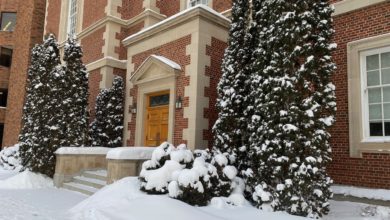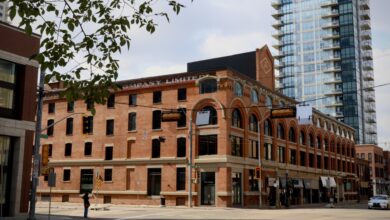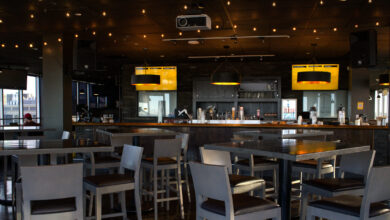FAB Gallery exhibition explores music
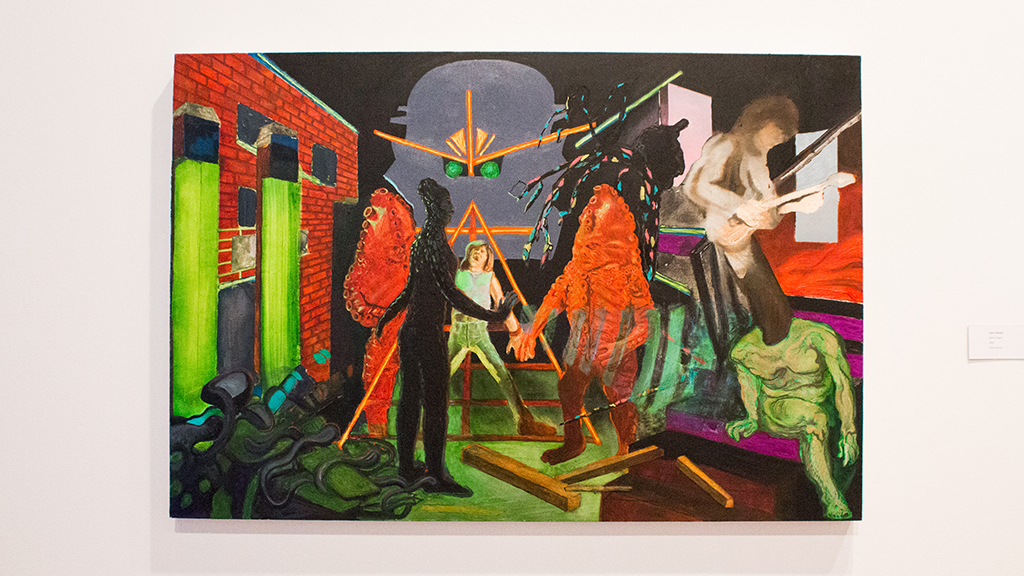 Christina Varvis
Christina VarvisSongs From the Labyrinth
Tuesday, Jan. 20 to Sunday, Feb. 15
Opening Reception Thursday, Jan. 22 at 7 p.m.
FAB Gallery, 1-1 Fine Arts Building
Jesse Thomas
In the foreground of Jesse Thomas’ painting “Clewe,” the Athabasca River bursts through two Roman relief panels, while in the background, the Tory building stands silently during winter. Above a fire, a pale, ethereal face hovers. It’s not who you’d expect.
“That’s actually Joe Elliott from Def Leppard,” says Thomas, an Assistant Professor in the Department of Art and Design. “If you look up the video for ‘Foolin’,’ you’ll be thrilled at how incredibly cheesy but also compelling it is. It’s really weird,” he laughs.
Juxtaposition is frequent within the paintings of Thomas’ new series entitled Songs From the Labyrinth. His works, which have emerged over the course of a year, explore painting’s capacity to harmonize various narratives within the intersection of personal memory, empirical data and socio-political history.
Thomas starts by questioning his own medium.
“Maybe painting isn’t the best way to engage with (these concepts) because it’s so subjective. The camera is a much more documentative tool,” he says.
But Thomas seems to have found a space for dialogue. Disparate images are unified by composition and colour. Pictures follow a dream logic, and certain motifs, such as paper airplanes, recur in different contexts to imply progression and narrative around the gallery.
Music is another medium in which the political, the nostalgic and the aesthetic interact, and Thomas applies music’s imagery extensively. Alongside political figures such as Henry Kissinger and the spectral face of an upside-down Milton Friedman, band members from Television, Rotary Downs and Narco Lopalco feature in Thomas’ work.
“Music is a clear example of the way aesthetic experience is delivered. You can be very tired and unhappy and a song might change the way you’re feeling. Music is also abstract, but it carries a content,” he says.
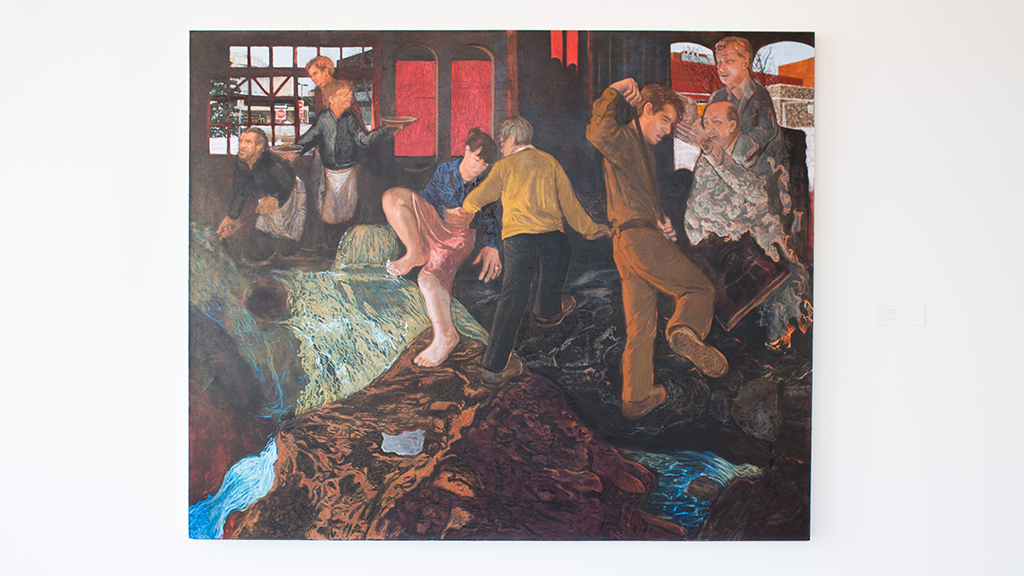
His piece CL10 captures the delirious energy of a punk show. Figures blend and smudge into each other. Ronald Reagan looks threatened by men in what look like striped uniforms, holding what look like tin cups. Power seems to be collapsing.
While engaging with empirical data of the physical world through the technicals of painting like density of material and particle size, Thomas seems of skeptical of purely scientific readings of art. He leaves room for metaphysics.
“You could argue that all experience is chemical,” Thomas says. “You just happened to have the right mixture of coffee and donuts that day, and say ‘Wow!’, that’s a great painting. But I don’t think that’s right. I think the best paintings have an aura they throw out. There’s some kind of concentrated energy there being sent back out at you.”
Thomas considers paint itself similarly. He is fascinated by its transformative process, from its beginnings as pigment from raw earthly materials to beautiful colour, to its initial inertia on the canvas, to its life as cognizable forms in front of the artist and the public. “Clewe” especially, is much more alive in the gallery than in reproduced images. The contrast between its familiar realism and the whimsical surrealism is much more striking and affective.
Thomas also says this particular show is a little unusual because the wall near the entrance displays his early oil sketches. Some of the small panels are almost completely white-washed because they were used as practice in dimming the focus of certain elements to make others thrust out.
While Joe Elliott is white-washed, he thrusts out from the picture. His narrative is the most vociferous, but exists as one among many.

